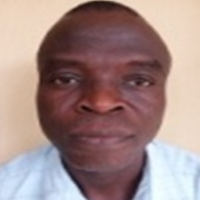
Isaac A. Ojedokun
Work place: Department of Physics and Solar Energy, Bowen University P.M.B. 284, Iwo, Nigeria
E-mail: elisreab2@gmail.com
Website:
Research Interests: Computational Engineering, Engineering
Biography
Isaac A. Ojedokun received B.Tech, 2000, M. Tech, 2014, and Ph.D. degree in 2018 in Electronic and Electrical Engineering from Ladoke Akintola University of Technology, (LAUTECH), Ogbomoso, Nigeria. He is a member of the Nigerian Society of Engineering (NSE) and a registered Engineer with Council for the Regulation of Engineering in Nigeria (COREN). His research is on signal processing, theoretical and empirical modeling in mobile communications.
Author Articles
MGF Analysis of Spatial Diversity Combiner over Composite Fading Channel
By Robert O. Abolade Zachaeus K. Adeyemo Isaac A. Ojedokun Samson I. Ojo
DOI: https://doi.org/10.5815/ijitcs.2019.10.03, Pub. Date: 8 Oct. 2019
The worldwide acceptability of wireless communication is due to its portability and flexibility. However, its performance is governed by the multipath propagation effects which make wireless communication modelling challenging. The existing technique being used to solve this propagation effects is based on Probability Density Function (PDF) which is inefficient in addressing diversity over combined Rayleigh and Rician (C_(Ray-Ric)) fading due to its complexity. Therefore, this paper aims to develop an approximated Moment Generating Function (MGF) for spatial diversity combining such as Equal Gain Combining (EGC) and Maximal Ratio Combining (MRC) over C_(Ray-Ric) fading channel. A MGF model in form of Taylor’s series is generated from the expected value of the C_(Ray-Ric) fading channels. The MGF is characterized using Amount of Fading (AF) and Bit Error Rate (BER) in term of Line of Sight (LOS) component ‘k’. The MGF is transformed into EGC and MRC, and were measured in terms of propagation paths (L). These are approximated using the Pade ́ Approximation (PA). The approximates obtained are used in the derivation of BER expression of M-ary Quadrature Amplitude Modulation (MQAM) and M-ary Phase Shift Keying (MPSK) in terms of Signal to Noise Ratio (SNR). The models are evaluated using AF and BER at different values of LOS to determine the performance of the diversity techniques. The results obtained show that as LOS component ‘k’ increases from 0, the Af and BER reduce indicating reduction in fading effects. Therefore, the models developed are effective in predicting the performance of diversity techniques and overcome the multipath effects associated with the wireless communication.
[...] Read more.Other Articles
Subscribe to receive issue release notifications and newsletters from MECS Press journals